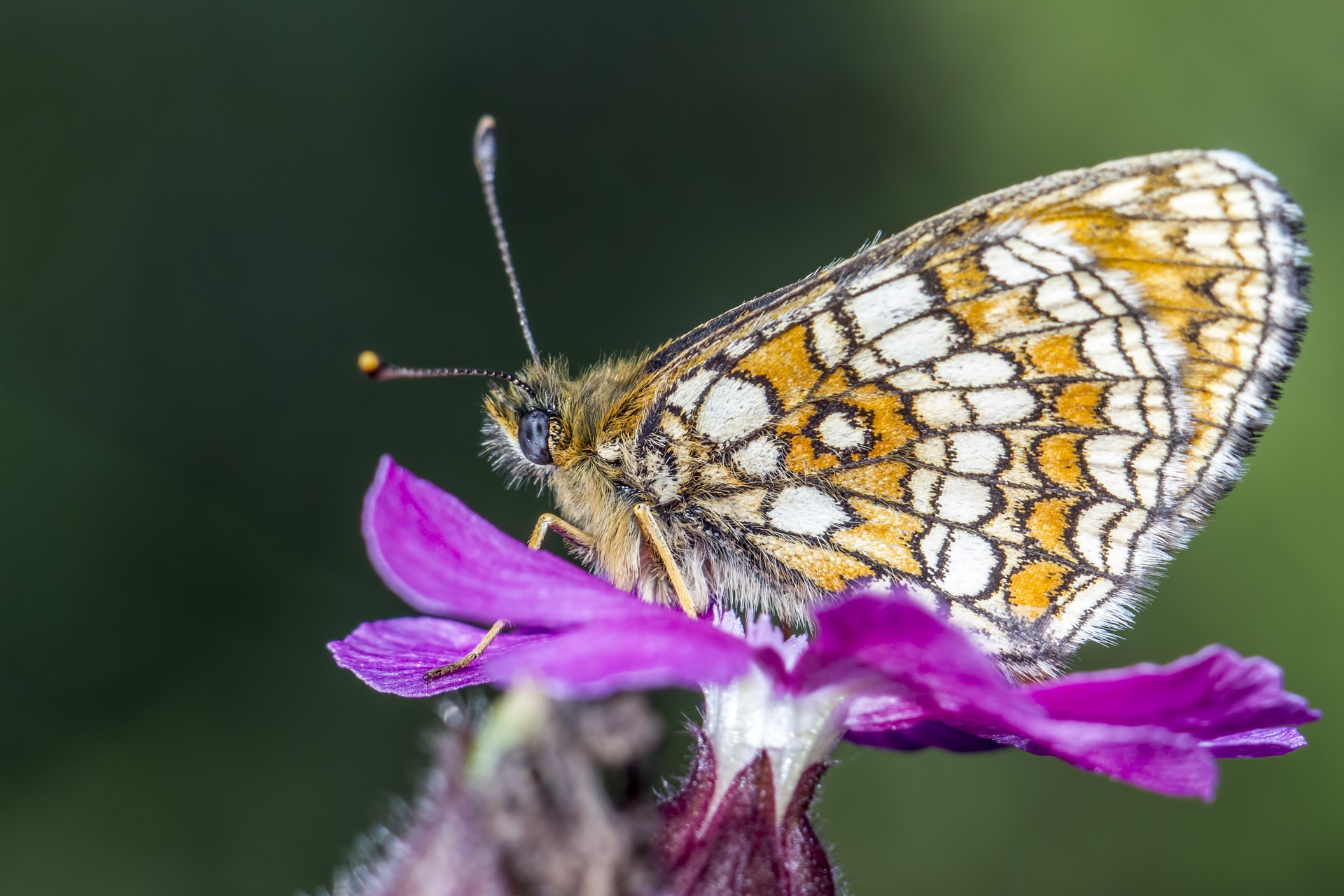The Heath Fritillary (Melitaea parthenoides), a member of the Nymphalidae family, commonly known as brush-footed butterflies, is a beautiful and ecologically significant butterfly species. Here’s an overview of Melitaea parthenoides:
Appearance:
- Size: The wingspan ranges from 35 to 40 millimeters.
- Coloration: The upper side of the wings is orange-brown with a pattern of black spots and lines. The hindwings feature a series of black spots bordered by orange.
- Undersides: The underside of the wings is paler, with a mix of cream, brown, and orange patterns that provide camouflage when the butterfly is at rest.
Habitat:
- Preferred Habitats: Melitaea parthenoides is typically found in open, sunny habitats such as meadows, grasslands, and heathlands. They prefer areas with abundant flowers and sparse vegetation.
- Geographic Range: This species is primarily found in Western Europe, with populations in countries like France, Spain, and Portugal. It is often localized to specific regions with suitable habitat conditions.
Behavior:
- Feeding: Adults feed on nectar from a variety of flowering plants, including knapweed, thistles, and buttercups. The caterpillars feed on host plants such as plantains and foxgloves.
- Activity: These butterflies are diurnal and most active during sunny weather. They can often be seen basking with their wings open to absorb sunlight.
- Flight: The Heath Fritillary has a distinctive fluttering flight pattern, often flying close to the ground.
Life Cycle:
- Eggs: Females lay eggs in clusters on the underside of host plant leaves. The eggs are small, round, and yellow.
- Larvae: The caterpillars are black with white spots and spines, and they live communally in silken webs during their early stages. They feed on the leaves of their host plants.
- Pupae: Pupation occurs in the leaf litter or attached to low vegetation. The pupae are brown and cryptically colored to blend with their surroundings.
- Adults: Adults emerge from pupae in late spring to early summer, with a single generation per year in most of their range.
Ecological Role:
- Pollination: As nectar feeders, adults contribute to the pollination of various flowers.
- Food Web: Caterpillars and adults serve as prey for birds, spiders, and other insectivores, playing a role in the local food web.
Conservation Status:
- Population: The Heath Fritillary is considered vulnerable in many parts of its range due to habitat loss and fragmentation.
- Threats: The main threats include agricultural intensification, urban development, and changes in land management practices that reduce the availability of suitable habitats.
Conservation Efforts:
- Habitat Management: Conservation efforts focus on preserving and restoring heathlands and grasslands. This includes traditional land management practices such as grazing and controlled burning, which maintain the open habitat structure.
- Monitoring: Populations are monitored to track changes in distribution and abundance, helping inform conservation strategies.
Interesting Facts:
- Mimicry and Camouflage: The coloration and pattern of the Heath Fritillary provide excellent camouflage against the dappled sunlight and leaf litter of their habitat, protecting them from predators.
- Lifecycle Synchronization: The lifecycle of Melitaea parthenoides is closely synchronized with the availability of its host plants, ensuring that caterpillars have food to eat as soon as they hatch.
In summary, the Heath Fritillary (Melitaea parthenoides) is a striking butterfly with a distinctive appearance and important ecological roles. Conservation efforts aimed at protecting its natural habitats are crucial for ensuring the survival of this vulnerable species.
Visited 244 times, 35 visit(s) today
Views: 405
Subscribe to the newsletter:
